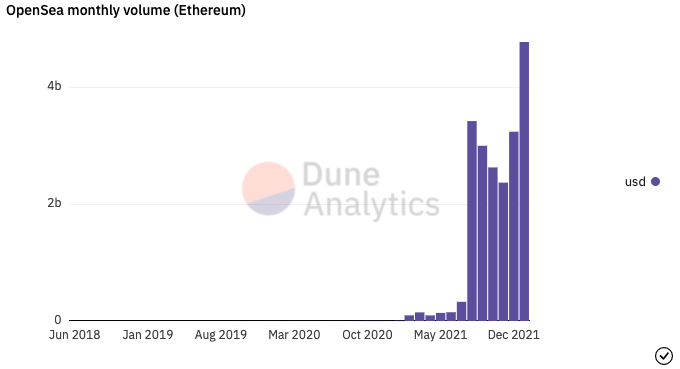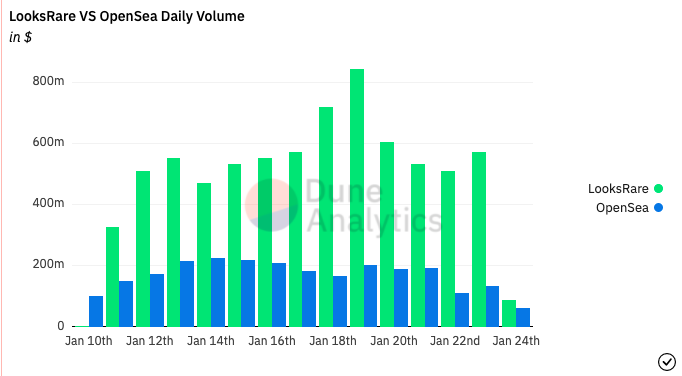Handling billions of dollars worth of transactions every month, OpenSea has single-handedly been dominating the NFT marketplace for quite a while now. Even though the dynamics of the marketplace have changed since its inception, this platform has been able to retain the throne.
The growing NFT craze has only aided OpenSea to expand its empire. Consider this – The platform’s transaction volume has already exceeded $4.78 billion in January, hitting a record high. With more than a week left for the month to end, this number is bound to go even higher.
Parallelly, the number of OpenSea transactions also hit a record high in a single month, exceeding 3.8 million.


Litmus test of OpenSea’s first mover advantage
The NFT market is a rapidly changing space and a ton of money is flowing in here daily. To cash in on the same, a host of new players like LooksRare have stepped into the space lately.
As highlighted in a recent article, LooksRare has already had a flying debut. Ever since its launch, the platform has been on a record-breaking spree.
From 11 January until now, this new platform has dealt with more daily volume relative to OpenSea. As per data from Dune Analytics, LooksRare recorded its highest single-day volume of $842.8 million on 19 December. On the same day, OpenSea recorded merely a fourth of the same [$202.6 million].


People championing LooksRare have already started talking about the “death” of OpenSea.
However, it should be noted that the novel platform has not been able to retain its user-base, while OpenSea has been able to effortlessly do so.
Blockchain analytics platform Nansen’s data brought to light the same.
OpenSea has, undoubtedly, benefit from its first-mover advantage. On the other hand, LooksRare has already become one of the biggest names in the entire NFT industry within days of its launch.
The former has stayed for long enough in the space to prove its legitimacy. But for the latter, only time will be able to justify if its model is indeed sustainable or not.





